Violin First Position – explained with finger charts, notes and videos
What is the first position on the violin?
First position is the easiest position to find on the violin and the first you learn. The notes of the first position start one note above the open string. For example the first finger (index finger) on the A string is placed on the note B. The further fingers are placed one note higher for each finger. In the first position your hand is located at start of the fingerboard near the peg box.
In this blog you’ll listen and see all the notes in the first position and learn how to find them on the fingerboard.
Within the first position you can move your finger half tones, which means there are different finger frames in the first position.
I’ll start explaining the first notes (first frame) you learn on the violin. See the finger chart below. After that we’ll discover more notes in the first position.
First notes you learn on the violin
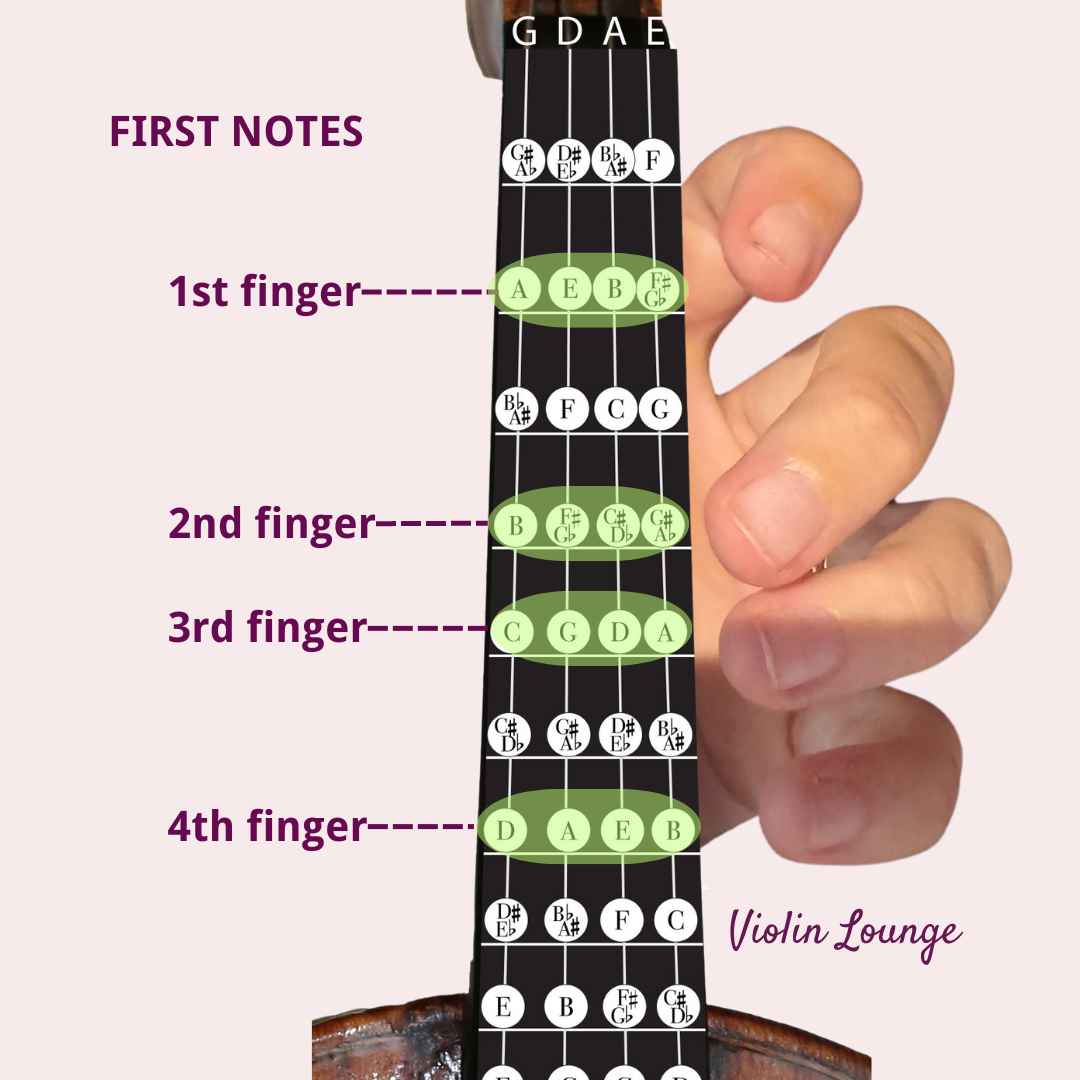
To learn to play in tune on the violin, it’s important that you first get proficient in the first finger frame in the first position. Above you see the notes of that first frame highlighted in green.
Finger placement of the first notes on the violin
The placement of the first finger notes is about one inch from the nut of the fingerboard. There is a whole step (tone) between the first and second finger, a half step (semitone) between the second and third finger and a whole step (tone between the third and the fourth finger. For most people that means that there’s space between the first and second finger, the second and third are close together and there’s space between the third and fourth finger.
Note names of the first notes
The notes you play with the first finger frame in the first position on the violin are (first to fourth finger): on the G string, A, B, C, D; the D string E, F#, G, and A; the A string B, C#, D, and E, and the E string F#, G#, A and B.
First notes in sheet music
In the below chart I’m linking the fingering to the note names and the notes in the sheet music. If you’re new to reading sheet music, here’s a beginner guide to reading notes.
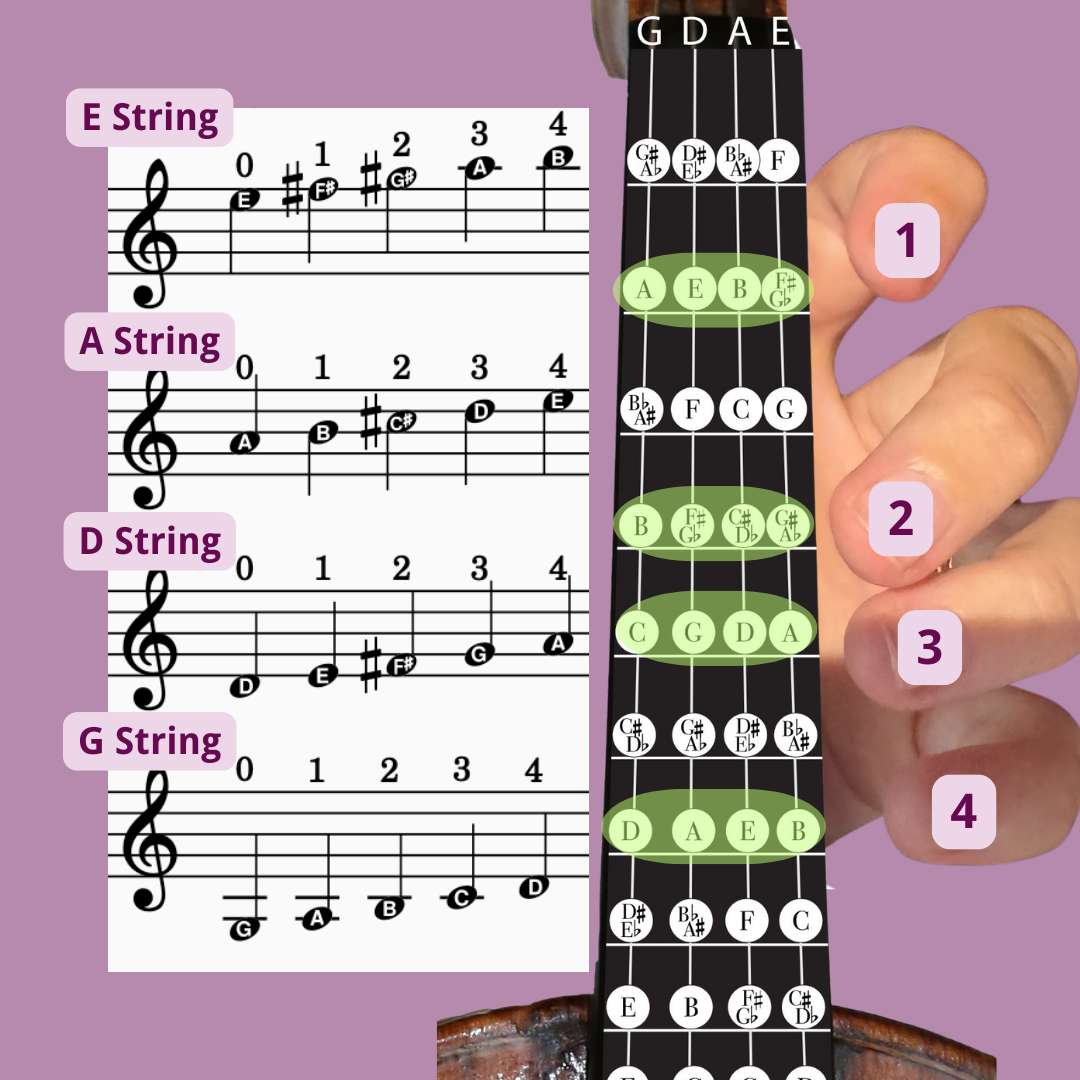
Finger tapes on the violin
Many beginner violinists will have colored tapes on the fingerboard showing where the first position is located. If you do not use tapes, you will need to place your fingers very carefully and check that you are in tune.
Personally I’m not a big fan of finger tapes on the violin as it’s so important with this instrument to train your ear and to adjust your fingers accordingly. Finger tapes can make you dependent and ‘lazy’ when it comes to listening. If you use them, don’t use them too long otherwise it might get in the way of your progress in the long run.
Where to place the tapes on your violin?
As the measurements of each violin are different (even slightly within one size), it’s best to look up the notes with a tuner and then place the tapes accordingly. You can also use this violin finger tape placement calculator, which gives you the measurements based on the vibrating string length (nut to bridge) of your violin. Below is an indication of where to place the finger tapes on the violin:
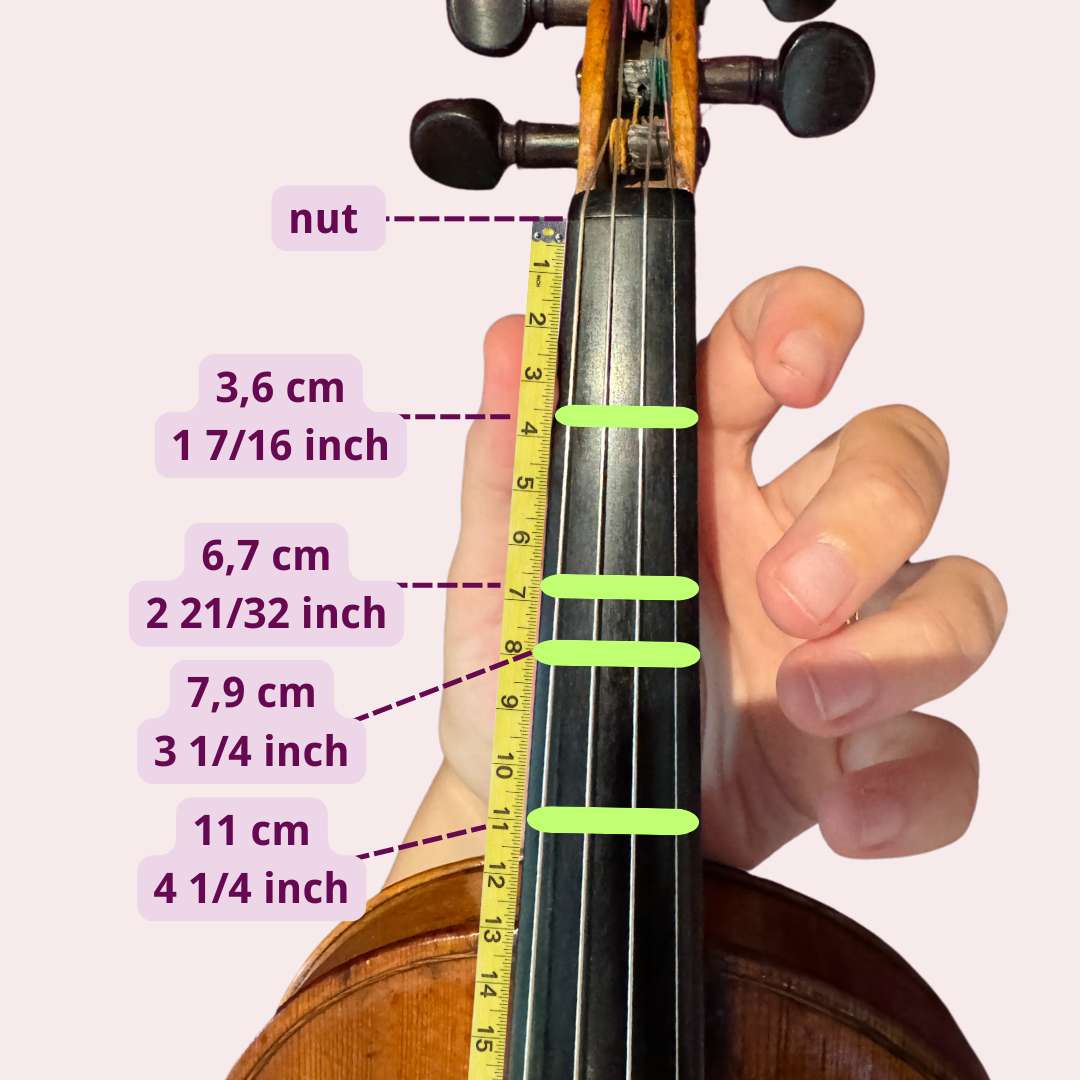
All notes in the first position
Now you have some clarity on how to find the first notes you learn, you can expand to all notes in the first postion.
All of these notes can be reached by adjusting one of your fingers a half step up or down. For example, to play a C natural on the A string instead of C#, move your second finger down a half step so it touches your first finger. For more details on using different finger combinations in first position, check out the article on half position.
In the video on the right (or below on mobile), you can listen to all violin notes in the first position.
Finger chart of first position and sheet music
Below you’ll find the finger chart and sheet music of all violin notes in the first position.
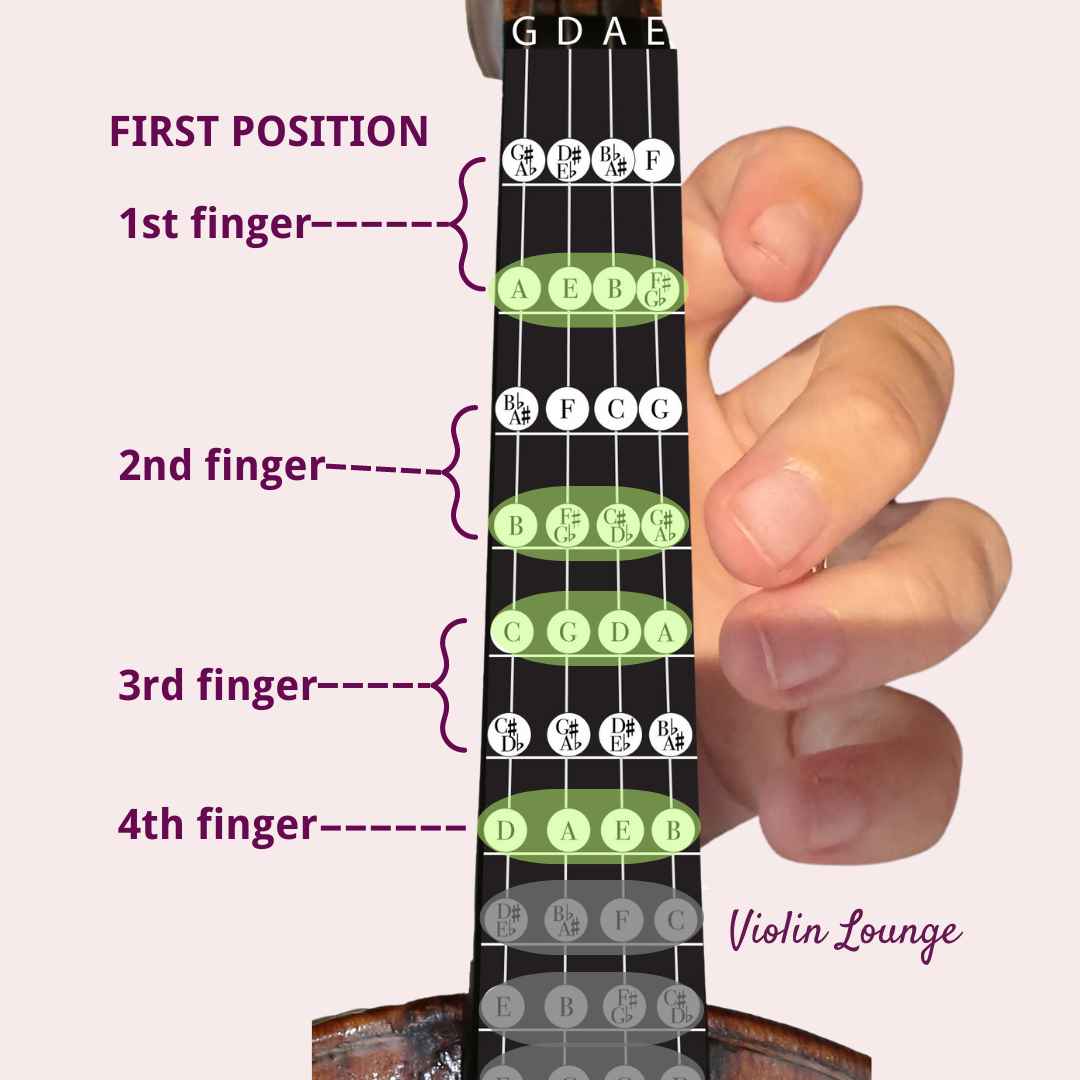
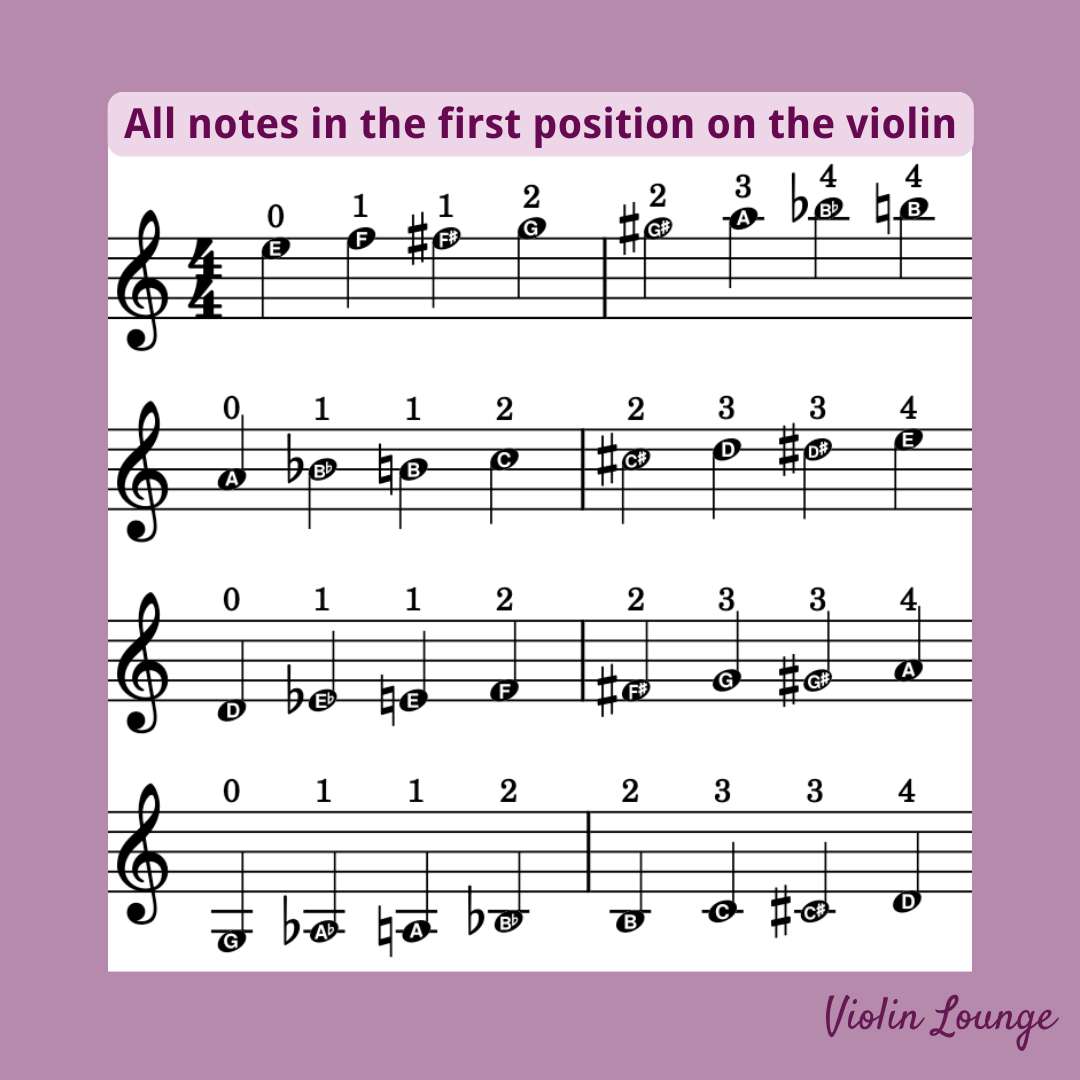
Violin music in the first position
You may be wondering, how much violin music can I actually play if I only know first position? Tons! There are so many beautiful simple pieces in first position, as well as arrangements of complex pieces. For example, the first three books of the Suzuki method can be played entirely in first position. The genres of hymn songs, fiddle tunes, and baroque music all have many selections in first position only. Here are just a few examples of books and etudes you can use to practice first position:
- Suzuki Vol. 1-3
- Graded Course of Violin-Playing, Vol. 1-4
- Scales in First Position for Violin by Harvey S. Whistler
- Sixty Studies, Op. 45 by Franz Wohlfahrt
- Fiddle Tunes for the Violinist by Betty Barlow
Actually all beginner methods start in first position.
It’s even possible to play easy violin concertos all in the first position. You can find a list of them with free sheet music right here.
Examples of first position
Here are a few examples of what your hand position will look like while playing in first position. Notice that the hand does not move up, but the fingers do individually move up and down a little to get different half steps. The first example is from Rieding’s Violin Concerto in B Minor.
The second example is Seitz’s Concerto No. 5 in D Major:
Join my FREE beginner violin course
I take you from scratch step by step to your first violin concerto including 40 videos, sheet music and violin tabs.

Hi! I'm Zlata
Classical violinist helping you overcome technical struggles and play with feeling by improving your bow technique.
How to Learn First Position on the Violin
Learning first position is one of the initial steps to learning violin. If you already know the basics of what notes are on each string, this will be very easy. The fingering charts and scale books shown above will help you learn how to place your fingers accurately and practice intonation. In the beginning, using tapes to remember notes helps, but it is even more helpful to practice setting each note with a tuner or drone to get your intonation as clean as possible.
If this is your first foray into learning violin notes, don’t worry! There are only a handful of first position notes to remember, and once you learn them you can play countless songs. Take it slow; trying learning one string or one scale at a time. If you have questions or other advice from your own experience learning first position, leave them in the comments!
If you’d like to learn the violin from scratch as an adult beginner, join my free complete beginner course right here.


Thank you very much ❤️❤️❤️❤️☺️